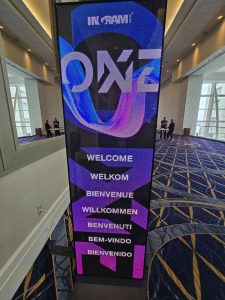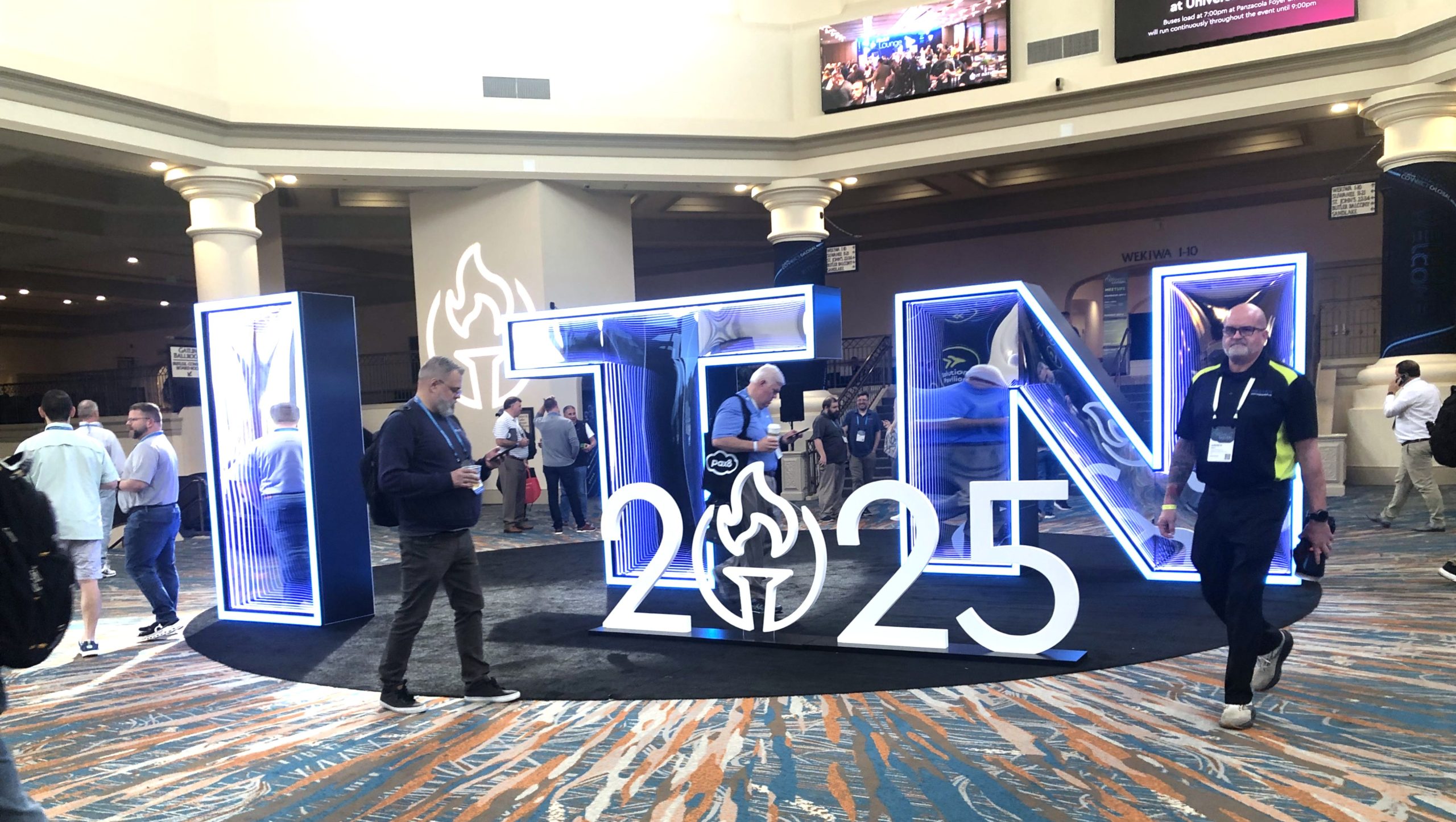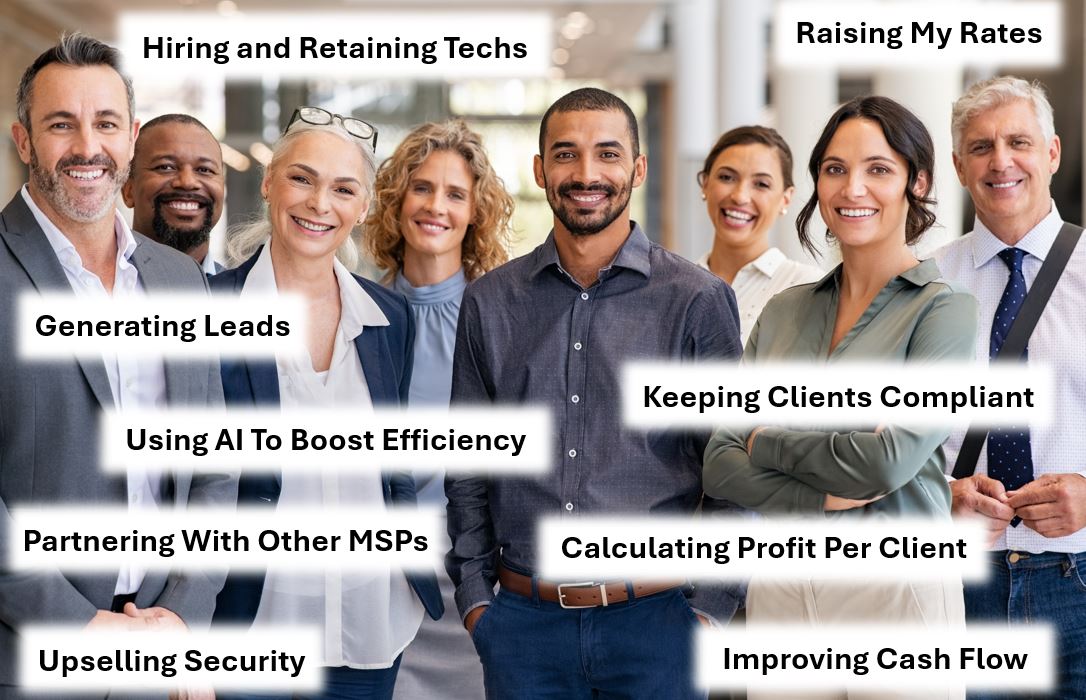AI and automation were front and center at Ingram Micro ONE. There, Executive Vice President and Global CTO Sanjib Sahoo took the stage to describe how the company’s “AI factory” is helping partners turn data into decisions and transactions into outcomes.
To dig deeper into what that means for MSPs, ChannelPro spoke with longtime Ingram Micro partner Steven Meek, founder of The Fulcrum Group, a Fort Worth, TX–area MSP. Meek shared practical insights on how IT providers can seize the AI opportunity.
Start Where You Stand
For most MSPs, the hardest part isn’t understanding AI. Rather, they need to know where to begin.
“There’s been a hyper focus on AI as well as cybersecurity throughout the industry,” Meek told ChannelPro, adding that service providers need guidance. “[Companies like Ingram Micro] are realizing that as partners, we’re struggling to figure out that first step, that second step, that third step for AI.”

Ingram Micro ONE drew the company’s partners from across the globe.
In his keynote, Sahoo reminded the audience that no system, be it human or computer-driven, starts perfect. “Everybody watches Netflix. The first day you log in, it doesn’t know your movies. You start using Netflix. You watch it, you watch it, you watch it — and it makes it better.”
The lesson: Progress comes from action, not hesitation.
According to Meek, the same iterative mindset applies to how MSPs leverage AI. Pilot small use cases, learn from your mistakes, and scale what works.
That’s why Fulcrum Group created an internal AI council, inspired by Microsoft’s model. “I’ve got a small part of the crew that’s having semi-monthly meetings and talking through our use cases. We’re discussing what’s working and talking through the challenges,” he explained.
Forming an AI council may sound corporate, but it’s been powerful for Meek’s team. They were able to document their experiments, validate that security guardrails are in place, and measure ROI.
Choose Partners That Push You Forward
After two decades working with Ingram Micro, Meek said his longevity as a partner came down to trust and shared vision. “You want someone who’s always looking out, always trying to help you prepare for the future, and always trying to build a better mousetrap.”
In practice, that means evaluating partners by the enablement they provide: access to data, insights, training, and tools that extend your capabilities. The right ecosystem doesn’t just move products; it builds the collective intelligence that keeps MSPs ahead of the curve. As Meek put it, “You don’t want someone who’s just trying to be good at what today is.”
That idea of collective intelligence was closely reflected the view that Sahoo shared from the main stage. “To win, we need an ecosystem. That ecosystem is all of you: our vendors, partners, and us. Together, we can write this new chapter.”
Think Like a Builder, Not a Buyer
Sahoo told the audience that agentic AI is changing the way the channel works. Agentic systems don’t just respond, they act. That means that in the near future, MSPs will design with AI, not just using it.
But to do that, Sahoo warned, you have to reimagine your workforce. “AI is not eliminating jobs. It’s actually changing our jobs,” he said. “The real value is reimagining ourselves, changing our workforce.”
MSPs that thrive will be the ones that retrain technicians and help them evolve into AI-proficient data analysts, customer success leads, and automation builders.
Build on Clean Data, Not Just Big Data

Sanjib Sahoo
Many MSPs assume that success with AI depends on scale. Meek said he used to think AI’s power was “having access to a whole bunch of data.” However, it is the opposite, he said. Precision beats volume.
Sahoo echoed that lesson. “Data alone can not make AI work. If you automate garbage, you will get very intelligent garbage.”
Start with one workflow, clean the data, and automate only after you validate it. The cleaner your foundation, the smarter your data-based decisions will be, he shared.
Focus on Outcomes
Ingram Micro’s focus is on not just sales, Sahoo said. “We don’t want to just distribute products. We want to distribute outcomes and intelligence.” That shift from what you sell to why it matters should resonate with MSPs everywhere.
Meek’s company has already benefitted from Ingram Micro’s approach. “[Ingram Micro is] endeavoring to do that a little bit more, helping us find that path, that starting point, find the resources, get the access, and have the conversations that we need to have,” Meek explained.
In the AI-era, the MSPs that win won’t just fulfill tickets. They will solve real business problems with thorough AI and automation adoption strategies.
Become the Innovation
In his keynote closing challenge, Sahoo asked, “We sell amazing technology in this channel, but do we use that technology in our business?”
With this, he urged partners to lead by example and leverage new technology to the fullest extent possible. “Start with your problem and solve it with AI,” he said. “The channel’s next chapter is here. It’s about replacing and reimagining.”
That mindset defines momentum, Meek stated. “If we’re not getting better, then we’re getting worse.”
The call to action may be daunting, but it’s simple. Build smarter systems, empower people, and adopt AI intentionally. Become the innovation before you sell the innovation.
AI and Automation Adoption Strategies
1. Form an AI Council
Create a small internal team responsible for testing and governing AI use cases. Include leaders from tech, ops, and client success to balance innovation with accountability. Use a 90-day rule for each pilot. Prove value fast or move on.
2. Map Journeys Before Tools
Document every workflow before introducing automation. Identify bottlenecks, handoffs, and areas where human judgment still matters. Fix inefficiencies first, then use AI to enhance what’s already working.
3. Clean Your Data
Unify data from your PSA, RMM, and CRM so client records are accurate and consistent. Standardize naming conventions, IDs, and tags across platforms. Quality data makes AI insights trustworthy and actionable.
4. Pilot Use Cases
Start with low-risk, high-frequency tasks like ticket summaries or renewal tracking. Define success metrics upfront and track time saved or errors reduced. Treat each pilot as a building block for a broader automation roadmap.
5. Align with Partners
Work with vendors who invest in your enablement, not just your purchases. Ask how their AI integrates with your existing stack and what data they can share. Choose partners who build solutions with and for you.
6. Train for Empathy and Intelligence
Reskill your team to pair technical ability with business understanding. Teach technicians to explain AI-driven insights in plain language. The MSPs that thrive will be the ones whose people can think strategically and communicate clearly.
7. Sell Outcomes
Shift from selling effort to selling measurable impact. Tie service tiers to client outcomes such as uptime, response time, hours and dollars saved. Make success metrics part of every proposal and review.
Jonathan Browning is executive director of content and engagement for The ChannelPro Network. He has been a leader in the IT channel for close to a decade and he’s an avid fan and early adopter of technology. He believes that the Managed Services industry is the most important driver of economic growth and human innovation on earth.
Images: Jonathan Browning/ChannelPro, Steven Meek














